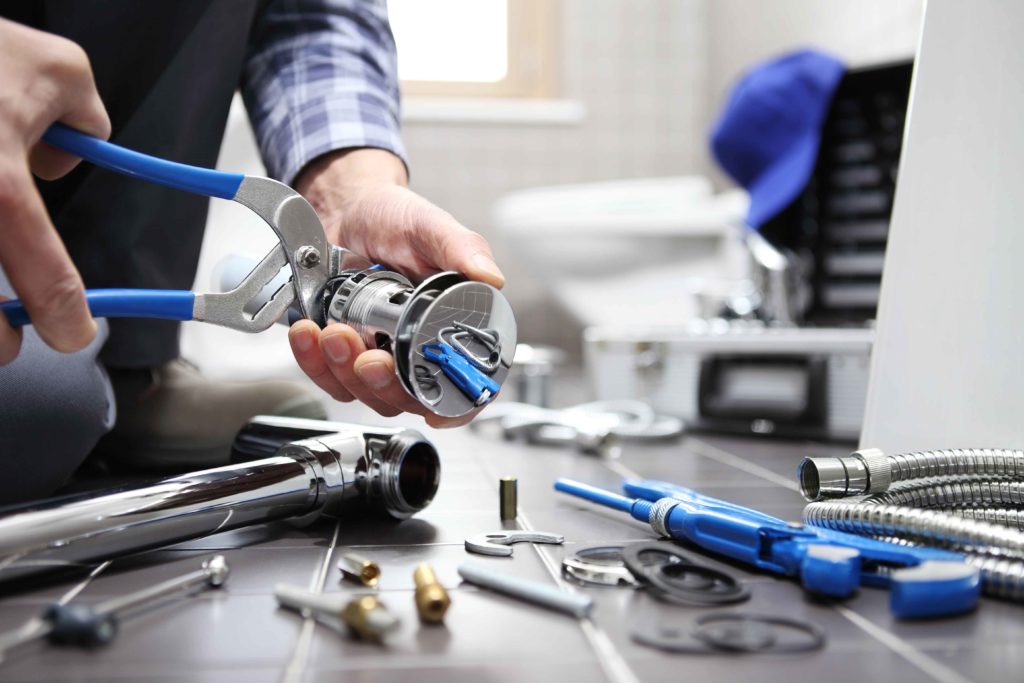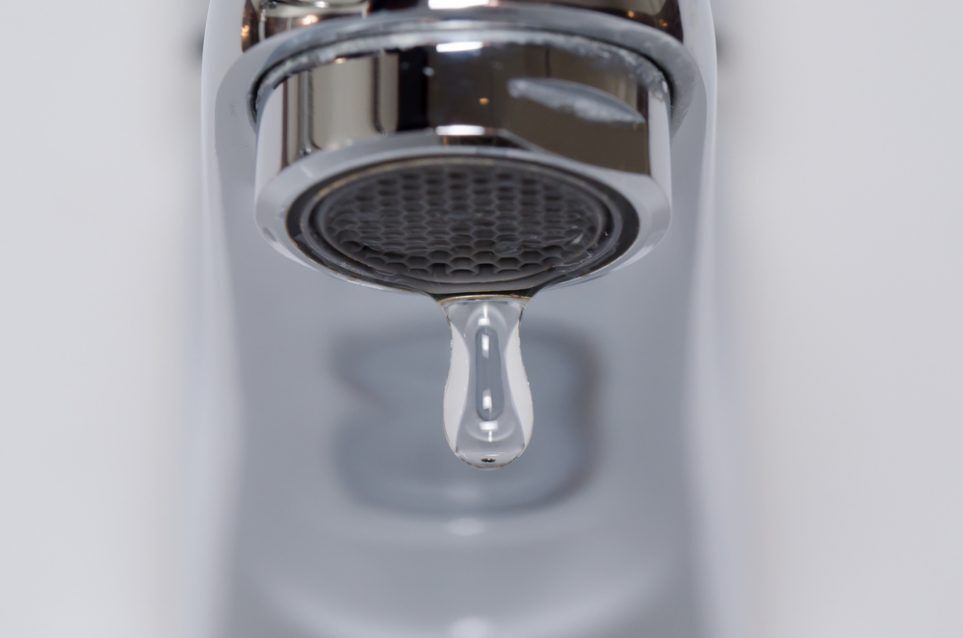Uncovering the Importance of Correcting a Malfunctioning Faucet
Uncovering the Importance of Correcting a Malfunctioning Faucet
Blog Article
What are your opinions about Water Dripping from Faucet: Why and How to Fix?

Trickling taps might appear like a small trouble, but their effect surpasses simply the aggravation of the audio. From drainage to sustaining unneeded economic costs and health threats, overlooking a trickling tap can cause different consequences. In this article, we'll look into why it's critical to resolve this typical household issue promptly and properly.
Waste of Water
Environmental Effect
Dripping taps contribute significantly to water waste. According to the Environmental Protection Agency (EPA), a solitary faucet dripping at one drip per second can throw away greater than 3,000 gallons of water annually. This not only pressures water sources but also influences environments and wildlife depending on them.
Financial Expenses
Increased Water Costs
Beyond the environmental influence, leaking taps can pump up water bills significantly. The accumulated wastefulness in time converts into greater energy costs, which can have been prevented with prompt repair work.
Possible Home Damages
Moreover, extended trickling can bring about damage to fixtures and surface areas bordering the tap. Water accumulation can cause discoloration, deterioration, and also architectural concerns if left neglected, leading to additional repair service expenses.
Health Problems
Mold and Mold Development
The consistent existence of wetness from a leaking faucet creates an optimal atmosphere for mold and mildew development. These fungis not just jeopardize indoor air quality yet also pose wellness dangers, especially for individuals with respiratory system problems or allergies.
Waterborne Diseases
Stationary water in trickling faucets can end up being a breeding place for bacteria and other microorganisms, raising the threat of waterborne diseases. Contaminants such as Legionella bacteria thrive in stagnant water, potentially leading to major diseases when ingested or inhaled.
DIY vs. Specialist Fixing
Pros and Cons of Do It Yourself Repair Service
While some may attempt to fix a trickling faucet themselves, DIY repairs come with their very own set of obstacles. Without appropriate knowledge and devices, DIY attempts can worsen the issue or bring about incomplete repairs, prolonging the trouble.
Benefits of Employing a Professional Plumber
Employing a specialist plumber guarantees that the underlying source of the dripping tap is addressed efficiently. Plumbers possess the experience and devices to detect and repair faucet issues effectively, conserving time and decreasing the threat of further damage.
Step-by-Step Guide to Repairing a Dripping Faucet
Tools Needed
Prior to trying to deal with a trickling tap, collect the needed devices, including an adjustable wrench, screwdrivers, replacement parts (such as washers or cartridges), and plumber's tape.
Typical Faucet Issues and Their Solutions
Identify the kind of tap and the particular problem creating the drip. Typical issues include worn-out washers, rusty valve seats, or faulty O-rings. Describe producer instructions or on-line tutorials for step-by-step advice on repair services.
Preventive Measures
Normal Maintenance Tips
To stop dripping taps, carry out regular maintenance such as cleaning up aerators, inspecting for leaks, and changing worn-out parts without delay. Additionally, take into consideration installing water-saving gadgets or updating to extra reliable components.
Value of Prompt Services
Resolving trickling faucets as soon as they're noticed prevents more water wastefulness and prospective damage, ultimately conserving both water and money in the long run.
Influence On Property Worth
Understanding of Well-Maintained Residential Or Commercial Property
Keeping a building in good condition, consisting of addressing upkeep issues like leaking taps, improves its regarded value and charm among prospective customers or renters.
Impact on Resale Worth
Residences with properly maintained plumbing fixtures, including taps, command greater resale values in the realty market. Attending to dripping faucets can add to a favorable impact during home assessments and arrangements.
Ecological Duty
Specific Payment to Preservation
Taking duty for fixing dripping taps straightens with broader efforts towards water preservation and ecological sustainability. Every person's actions collectively make a significant influence on maintaining valuable resources.
Sustainable Living Practices
By focusing on timely repair work and adopting water-saving habits, people contribute to lasting living methods that benefit both existing and future generations.
Verdict
Dealing with a trickling faucet exceeds mere convenience; it's a necessary action towards conserving water, decreasing economic costs, and securing health and wellness and residential property. Whether via DIY repairs or professional assistance, acting to repair leaking faucets is a little yet impactful method to promote responsible stewardship of resources and add to a much healthier, a lot more lasting future.
How to Fix a Leaky Faucet: Step-by-Step Repair Guide
A leaky faucet may seem like a simple annoyance, but if it's not fixed promptly, that leak could cost hundreds to potentially thousands. From water damage to mold, mildew, and high water bills, even a tiny leak can be catastrophic if left unattended. Damage like this can even affect the overall value of your home, so it's important to take the right approach for leaky faucet repair. You may need the help of a plumber in some cases, but we've got a few tips you can try on how to fix a leaky faucet before calling the pros.
Four Faucet Types
When you're learning how to fix a leaky faucet, the first step is knowing what kind of faucet you're working with! There are four common types.
Cartridge Faucets
Cartridge faucets come in one- or two-handled varieties. In one-handled cartridge faucets, hot and cold water combines in a single cartridge. In the two-handled versions, hot and cold water are controlled separately and mixed in the faucet.
Ball Faucets
Ball faucets have a single lever you push up and down to adjust the pressure and rotate to change the temperature. A slotted metal ball controls the amount of water allowed into the spout.
Compression Washer Faucets
They're the oldest type of faucet, but they're still used in many homes — especially older ones. Compression faucets have two separate handles that, when turned, raise or lower the washer that seals a water valve. This valve stops water from flowing through the faucet when it is turned off.
Disc Faucets
Disc faucets rarely need to be repaired due to their maintenance-free design. The water flow is controlled by two discs — the upper one raises and lowers against a fixed lower disc, creating a watertight seal. If your disc faucet starts leaking, you may need to replace the seals or clean residue buildup from the inlets.
Fixing a Leaky Faucet
Step 1: Turn Off the Water
Whether you're learning how to fix a leaky bathtub faucet or how to fix a leaky kitchen faucet, always turn off the water supply to your working area when you're fixing a leak. The last thing you want is a flood added to your list of things to fix.
Look for the shutoff valves below your sink or around the tub and turn them clockwise to stop the water flow. If your faucet doesn't have shutoff valves, you may need to turn off the water for the whole house. Check to make sure it's off by turning the faucet on. If nothing comes out, you're ready to start the repair.
Step 2: Take Apart the Faucet
How you disassemble your faucet depends on the type of fixture you have. You can use a flathead screwdriver to remove the caps on top of the handle or handles for cartridge and compression faucets. Inside, you should see handle screws. Unscrew these with a screwdriver to remove the handle.
Disc- and ball-style faucets will typically have an inlet screw near the handle, and removing that will reveal the interior of the faucet.
Detach the Valve Stem
For cartridge- and compression-style faucets, you'll see the inner valve stem or cartridge once you remove the faucet handles. If you have a compression faucet, unscrew the brass valve stem. If you have a cartridge faucet, pull out the cartridge. If your cartridge has been in place for a while, it may require some tools or extra force to remove it due to mineral deposits.
Examine and Replace Parts
Once you've removed the parts, check them out to confirm what needs to be replaced. You may see corroded rubber washers, O-rings, stems, or cartridges. On a ball-style faucet, check the seats and springs for damage.
If you need to repair a leaky disc faucet, check the inlet and seals on the lower disc.
Once you determine what parts must be replaced, visit your local hardware store. Bring the damaged parts with you to ensure you can purchase the correct components to replace them.
Clean Valves and Faucet Cavity
If you've removed a stem or cartridge, you may notice mineral buildup in the faucet's threads. Use white vinegar to clean the valve seat by soaking it for a few minutes, then scrub it away with a soft toothbrush and rinse with warm water. You can also clean the interior of the faucet in the same way.
Reassemble the Faucet
Once your faucet is cleaned and the required parts have been replaced, it's time to reassemble it. Put the pieces back together and slowly turn the water supply back on. Doing this slowly is crucial because too much initial water pressure can damage the new hardware you've just installed.
https://homewarranty.firstam.com/blog/how-to-fix-leaky-faucet

Do you really like reading up on How to Fix a Dripping or Leaky Faucet ? Try leaving a remark further down. We would be delighted to listen to your opinions about this piece. We hope that you visit us again later on. Kindly take a moment to distribute this blog entry if you appreciated it. Thank-you for going through it.
Report this page